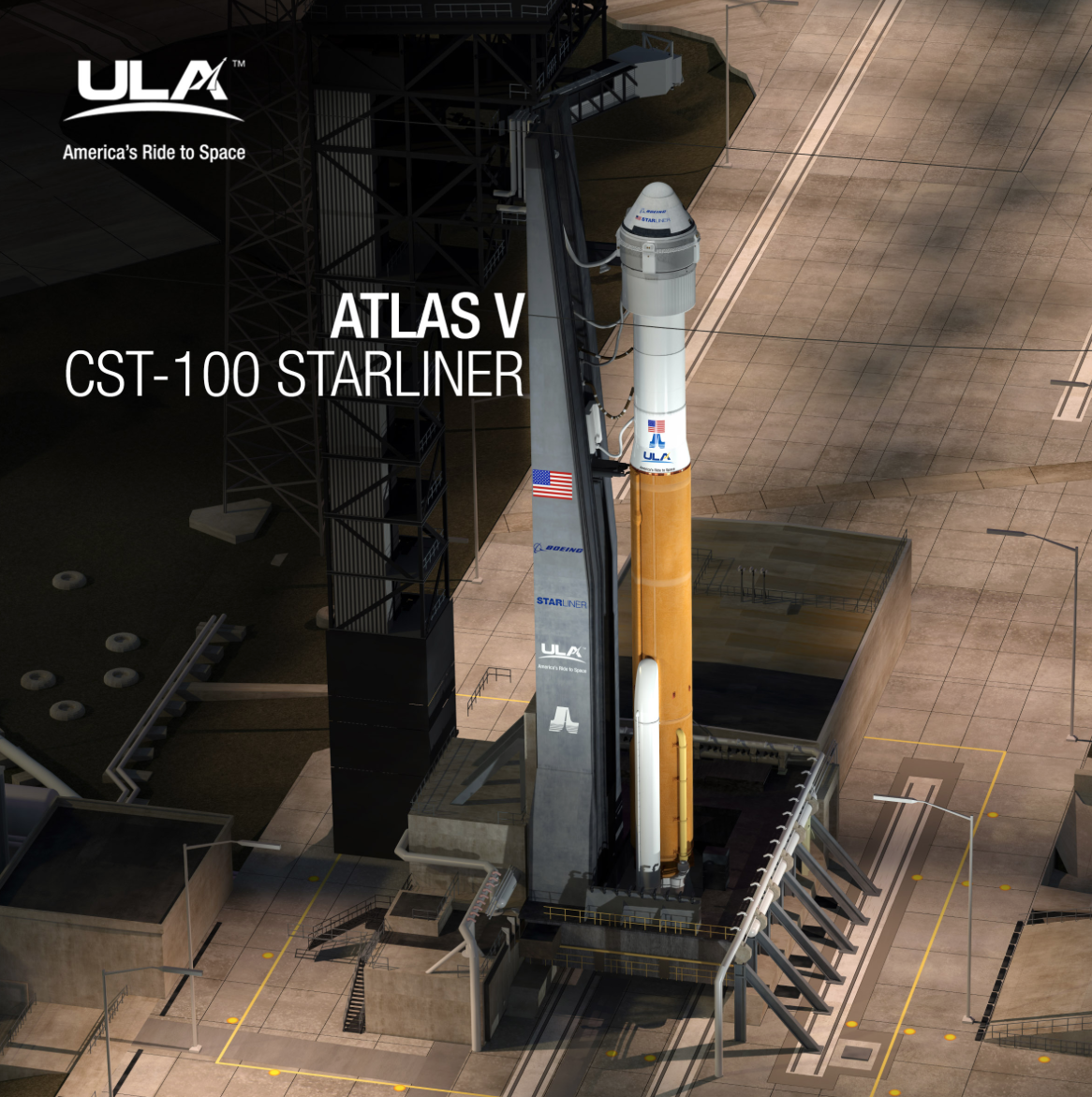
Cape Canaveral Air Force Station, Florida. (October 13, 2016) – A United Launch Alliance (ULA) Atlas V rocket with the CST-100 Starliner capsule on Space Launch Complex-41 at Cape Canaveral Air Force Station. The Atlas V carrying Starliner will launch American astronauts from US soil to the International Space Station beginning in 2018. Photo by United Launch Alliance/Boeing
The goal of the US transporting astronauts to the International Space Station is finally within reach, something that up until now has required the US relying upon other nations' transport to and from ISS. NASA has paid Russia, and over 12 years could end up paying, more than $3.36 billion.
With the thought of being self sufficient, United Launch Alliance (ULA) and The Boeing Company unveiled an updated aerodynamic configuration of the Atlas V that will launch Boeing’s CST-100 Starliner capsule for NASA after encountering unique challenges with aerodynamic stability and loads.
This new configuration incorporates an aeroskirt aft of the spacecraft, extending the Starliner Service Module cylindrical surface to improve the aerodynamic characteristics of the integrated launch configuration and bring loads margins back to acceptable flight levels.
Gary Wentz, ULA vice president of Human and Commercial Services said, “Through incredible coordination and continued innovative thinking, the collective team of NASA, Boeing and United Launch Alliance completed three wind tunnel tests in six months to investigate the aerodynamic stability of various configurations and to anchor our analytical predictions. Based on that information, we updated the configuration for the Atlas V Starliner integrated vehicle stack. This configuration is unique because it combines the Atlas V launch vehicle without a payload fairing with Boeing’s Starliner capsule, resulting in different aerodynamic interactions.”
The aeroskirt is a metallic orthogrid structure designed to be jettisoned for improved performance. In the unlikely event that an emergency occurs during boost phase of flight, the aeroskirt has venting provisions to control over-pressurization if the Starliner’s abort engines are fired. Fabrication of the aeroskirt is scheduled to begin this month at ULA’s factory in Decatur, Alabama, following completion of a Production Readiness Review.
John Mulholland, vice president and program manager of Boeing's Commercial Crew Program stated, "Our testing indicates the solution we chose will sufficiently smooth the air flow around the vehicle during ascent, ensuring crew safety and mission success," said .
The ULA team completed the aeroskirt Preliminary Design Review earlier this month. The Atlas V with Starliner has a planned uncrewed flight test in 2018 with operational missions to follow.
“We look forward to our continued partnership with Boeing and NASA to ensure mission success and safety for American astronauts flying from U.S. soil on the Atlas V Starliner,” said Wentz.
ULA has successfully delivered more than 110 satellites to orbit that provide critical capabilities for troops in the field, aid meteorologists in tracking severe weather, enable personal device-based GPS navigation and unlock the mysteries of the solar system. http://www.ulalaunch.com

